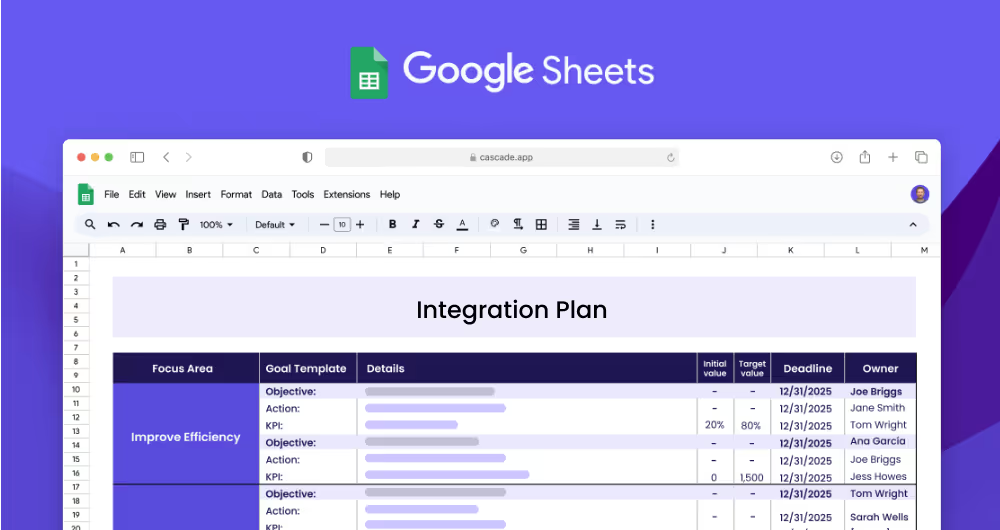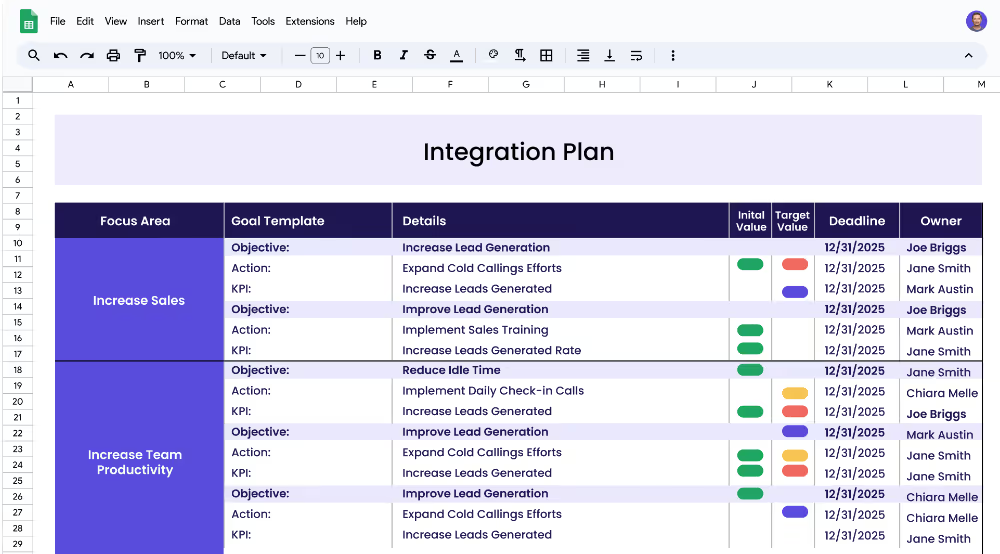An integration plan is a comprehensive organizational plan that is designed to help organizations transition into a new state while ensuring that the goals of the transition are achieved. It outlines the activities, initiatives, and resources needed to successfully integrate two or more organizations into a single entity. This includes setting objectives, defining focus areas, setting measurable targets (KPIs), implementing related projects, and monitoring progress. The integration plan template provides a step-by-step guide for organizations to create their own integration plan and ensure a successful transition.
Each focus area has its own objectives, projects, and KPIs to ensure that the strategy is comprehensive and effective.
The integration plan template is for organizations in various industries undergoing a merger, acquisition, or other type of integration. This template is designed to help organizations develop an effective integration plan that encompasses the core elements needed for a successful transition. The template includes sections on focus areas, objectives, KPIs, actions, and measurements.
Focus areas are the broad topics that an organization wants to address during the integration process. Examples of focus areas include streamlining integration process, enhancing employee engagement, and streamlining IT infrastructure. When determining focus areas, it is important to consider the organizational goals and objectives of the integration.
Objectives are the specific goals that the organization wants to achieve within each focus area. Objectives should be measurable and actionable, making it easier for the organization to track progress and determine if the objectives have been met. Examples of objectives for the focus area Streamline Integration Process could include improving communication and establishing common practices.
KPIs (Key Performance Indicators) are measurable goals that are set to track progress towards achieving an objective. For example, if the objective is to improve communication between organizations, a KPI could be to increase the number of meetings between working groups. KPIs should be measurable, have an initial value, a target value, and a unit of measurement.
Projects (also known as actions) are activities that are undertaken to achieve the objectives and KPIs set in the integration plan. For example, if the objective is to establish common practices, the related project would be to establish an integration governance. Projects should be detailed and include steps, resources, and timelines for completion.
If you’re seeking a more dynamic approach beyond traditional methods for managing your integration strategy, turn to Cascade Strategy Execution Software. This platform outshines spreadsheets and other static tools by enabling real-time updates, centralized collaboration, and automated reporting. With Cascade, you can ensure that your integration efforts are aligned and adaptive, efficiently managing complex, multi-team strategies. Sign-up for free or book a demo with one of our strategy experts to explore how you can optimize your integration process with advanced strategic tools.


